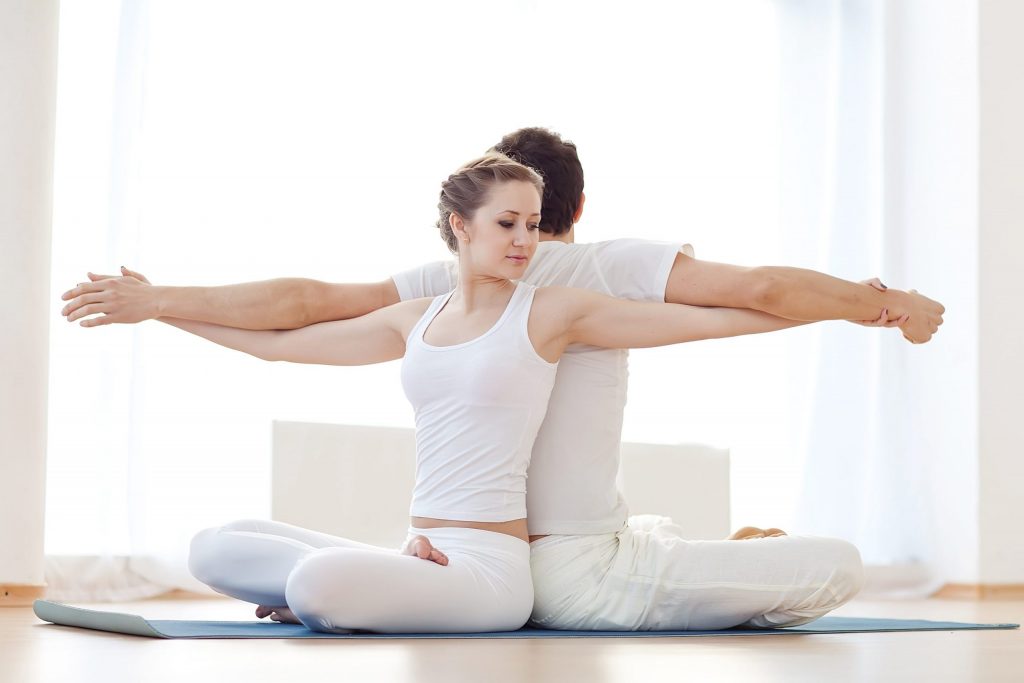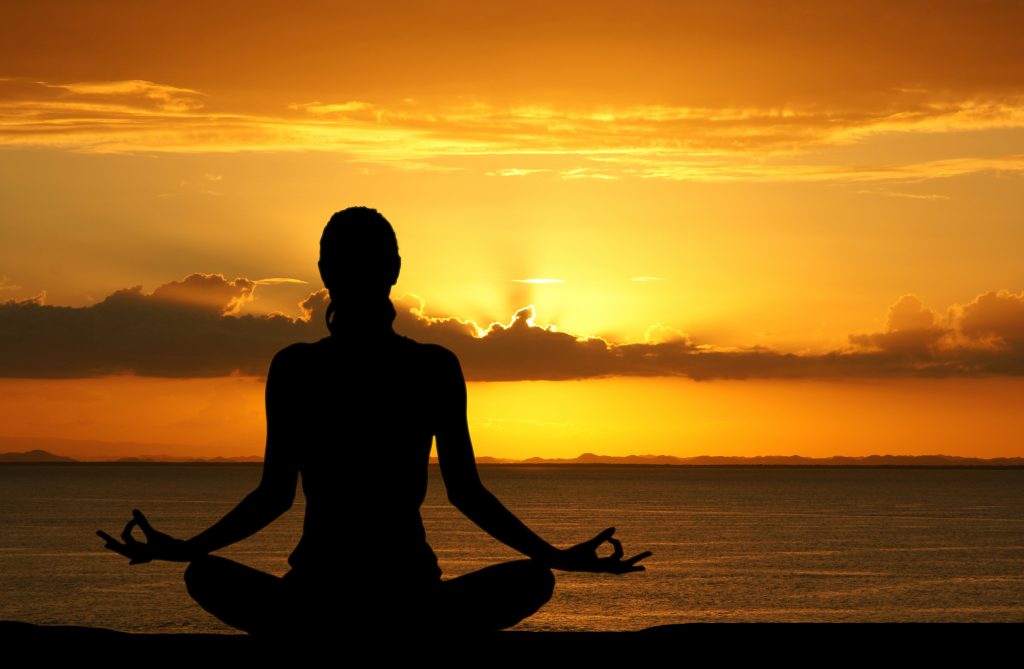
Yoga and meditation; meditation and yoga. Of all the holistic activities in the zeitgeist, there are none that are mentioned together more frequently than yoga and meditation. Indeed, they’re combined so frequently that they’ve come to seem, at first glance, like the cheese and crackers of the contemporary wellness diaspora – a natural pairing. Both are feel-good pursuits that – let’s paint with the broadest possible brush strokes possible at this stage of discussing them, and their relationship to one another – have something to do with syncing the energies of the body and mind.
However, the constant pairing of the words “yoga and meditation” can be misleading. They can be synergistic concepts, and indeed can be practiced simultaneously. Complicating matters, however, is the fact that, as individual terms, both “yoga” and “meditation” contain almost infinite multitudes of different techniques, lineages, and ways of thinking. These myriad meanings are accrued across millennia and cultures. To make matters even more intricate, most recently, these words have, separately and together, undergone a process of fathomless diversification in the Age of Social Media.
Defining these terms in a way that means something to you will empower you to engage with them on your own terms. This space voyage through the cloudy cosmos of “yoga and meditation” will introduce each of the two concepts, in its most basic format, paving the cosmic highway for you to explore their relationship, as well as deciding to take up yoga – or meditation – independently from one another.
Yoga and meditation: define your terms, or save your prana
Mentioning yoga and/or meditation without specifying types and contexts is the height of mindlessness; they are such broad terms that they have ceased to be semantic signifiers. In short, without more details being provided, both terms are obscured by an ever-expanding nebula of possible identities, meaning that it’s totally okay – indeed, to be expected – if you’ve heard them together, or separately, and haven’t the foggiest idea what the actual practices entail.
Depending on who’s using the words “yoga and meditation,” they might be purposed on conjuring up conceptions of Buddhist monks or trendy Silicon Valley tycoons – with the listener independently conceiving of something else entirely, like yummy mummies in yoga pants. It doesn’t help that the clan of concepts contains relative misnomers like “kundalini yoga,” which, with its heavy focus on meditation and the chanting of mantras is, essentially, a physically intensive meditation practice.
The right pairing of yoga and meditation could be like cheese and crackers, but these two words connote so many different modes of practice that an alternative combo could just as easily be like chalk and cheese. Let’s start by stripping away the sociocultural layers, to reveal the base definitions of both yoga and meditation – turning them back into words you can work wonders with.
Yoga: a way of living
In its purest essence, yoga is a way of life. It is one of many possible approaches to healthy living, but it encompasses more than just physical health. Traditional yoga, or Ashtanga yoga has eight branches, also known as limbs or steps, which together, target aspects of your being in a totalistic sense. As well as your physical health, yoga, in the true sense of the word, curates your overall mental wellbeing, moral fibre and deep inner world.
Eight limbs sounds like a lot, but there’s no need to get them in a twist. The eight steps, or elements, of a life yogically lived are as follows:
- Yamas – your codes of self-conduct; how you see and move through the world, including making commitments to truthfulness and nonviolence
- Niyamas – your practices of self-discipline; for example, maintaining your studies and cleanliness
- Asanas – the postures you practice regularly to attain strength, stamina and boost your overall physical health
- Pranayama – the art of learning to control your breath, the life-force which sustains you
- Pratyahara – focussing your senses inward, to develop your inner self
- Dharna – learning to concentrate deeply
- Dhyana – in order to meditate effectively, in order to achieve
- Samadhi – the sensation of transcendence; the ultimate goal of yogic meditation
Many people have a misconception that the term yoga refers solely to the asanas which they might encounter in a class at the gym, perhaps with a smidgeon of pranayama practice thrown in, for “authenticity,” if there’s a particularly well-travelled teacher.
The fact that people practice the asanas without being aware that they are just one of the eight interconnected wellbeing techniques that make up yoga as a whole is not necessarily problematic. In our contemporary society, people experience all kinds of positive effects from doing what they think of as “yoga.” These include, but are not limited to, improved self-esteem, alertness, posture, digestion, and strength.
One of the many (octo)plusses to be gained from looking at the asanas as part of the eight-limbed entity that is yoga as a whole, however, is the sense of connection between yoga and meditation becomes apparent.
The Savasana: where yoga and meditation meet
Although it is eminently possible to practice the asanas and reap some benefits, without also necessarily allocating time for meditation, one reason that they are often paired together is that they can be synergistic. Moving through a sequence of yogic poses, particularly if you incorporate pranayama breathing techniques into your practice, can help relax both the body and the mind, serving as excellent preparation for meditation.
Most sequences of asanas end, traditionally, with the Savasana, or “corpse pose,” a position in which you lie flat on your back with your arms by your sides and your palms facing upwards. In this position, you can concentrate on feeling the full force of the vibrations which you have encouraged into your body by the means of your yoga practice.
This is considered to be an optimal point from which to begin meditation, with many people opting for an “extended Savasana” and spending ten to fifteen minutes in this pose in order to enjoy its meditative benefits. If you’re already practicing yoga poses, and are considering taking up meditation too, the Savasana could be an excellent place to start.
Meditation: a way of thinking
Meditation is part of the yogic way of life, but it’s also something you can practice in its own right. So, if even hearing the term “downward dog” makes you feel like you’ve had a full-body workout you never asked for, there’s no need to look away. In its most basic form, meditation is a means of interacting with your mind. There are many different techniques which constitute meditation, and which vary in complexity, and in the extent to which they coalesce with particular physical yoga practices.
If you’re not yogically inclined, but you do like the sound of some of the benefits of meditation – which include reduced anxiety and increased awareness, improved creativity, boosted mood and inner peace, to name a few – you might wish to explore one of the forms of meditation which is entirely effective in its own right, such as mantra-based meditation.
An entirely self-contained process which contains the formula for a more fulfilled self, mantra-based meditation can be practiced any time, anywhere: all you need is your mind and your mantra. In Beeja meditation, which is based on the oldest form of meditation in the world, your mantra is specially chosen for you from among thousands by dedicated meditation teachers, ensuring that, when you come to your practice, you are in full posession of the one and only tool you need to succeed.
If you would like to explore Beeja meditation, whether this is your first encounter with yoga and meditation, or whether you’re considering adding this technique to your existing yoga practice, you can visit us in London, or book a course.

The Benefits of Beeja Meditation
- Reduce stress and anxiety
- Greater clarity and calm
- Increase focus
- Enhance relationships
- Sleep better
- Feel energised



